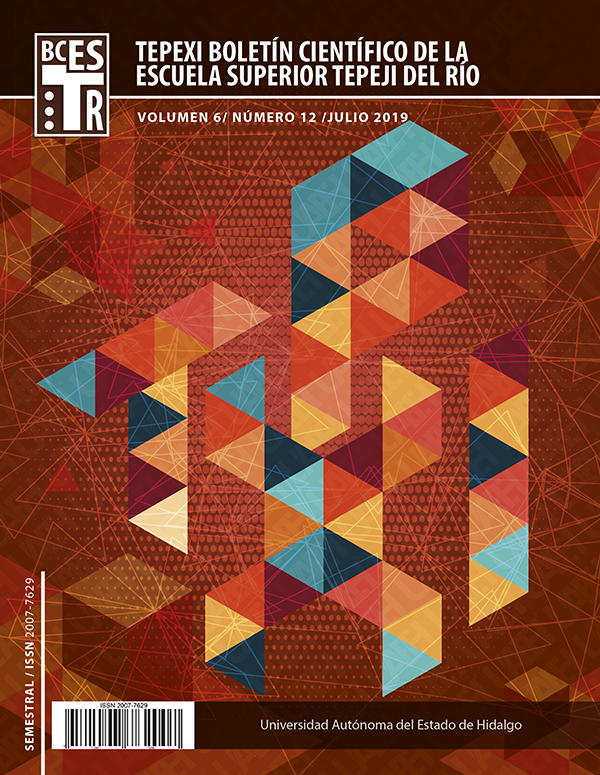Análisis de la importancia del cuadro de mando integral para Microsoft® corporation
DOI:
https://doi.org/10.29057/estr.v6i12.4248Palabras clave:
Ambiente organizacional, Cuadro de mando Integral, Herramientas para la toma de decisionesResumen
El ambiente organizacional precisa de herramientas útiles que permitan la gestión de las organizaciones, lo anterior debido a caótico y exigente ambiente de negocio al cual se enfrentan las empresas. Por un lado, los nuevos métodos de producción, la necesidad y selectividad del mercado, han hecho que la competencia empresarial se vuelva cada vez más difícil y rigurosa. En el presente documento, se aborda la herramienta del cuadro de mando integral usada por Microsoft®, como herramienta para la toma de decisiones, a través de sus cuatro perspectivas: financiera, del cliente, interna y de innovación.
Descargas
Citas
Bhatt, P., Ahmad, A. J. & Roomi, M. A. (2016). Social innovation with open source software: User engagement and development challenges in India. Technovation, 52, 28-39, consultado de: [https://reader.elsevier.com/reader/sd/pii/S0166497216000055?token=7EBBA9E0B39E5603B3B606998E0DFE2467D9B516D9BD5D3E852A868DEB79CF47D5A02DBF2DFA3A102F55D56A0975B309] & https://www.sciencedirect.com/science/article/pii/S0166497216000055].
Dincer, H., Yüksel, S. & Martinez, L. (2019). Balanced scorecard-based Analysis about European Energy Investment Policies: A hybrid hesitant fuzzy decision-making approach with Quality Function Deployment. Expert Systems with Applications, 115, 152-171, consultado de: [https://www.sciencedirect.com/science/article/pii/S0957417418305001] & [https://reader.elsevier.com/reader/sd/pii/S0957417418305001?token=892AE574E2567613A995671F128A9C0EC1D0EEFC48A46307D262BCB2882F0F2360EA1ED5A537B36D99D318969940CB30].
Johnson, P., Cassell, C., Close, P. & Duberley, J. (2001). Performance evaluation and control: supporting organizational change. Management Decision, 39(10), 841–851. DOI: [10.1108/00251740110402337], consultado de: [https://www.emeraldinsight.com/doi/full/10.1108/00251740110402337].
Kangis, P. & Williams S., D.G. (2000). Organisational climate and corporate performance: an empirical investigation. Management Decision, 38(8), 531–540, DOI: [10.1108/eum0000000005371], consultado de: [https://www.emeraldinsight.com/doi/full/10.1108/EUM0000000005371].
Kaplan, R.S., Ballve, A. & Davila, A. (2000). Microsoft Latin America, Harvard Business School, 9-100-140, consultado de: [https://www.hbs.edu/faculty/Pages/item.aspx?num=26988].
Kaplan, R. S. & Norton, D. P. (1992). The balanced scorecard: measures that drive performance, consultado de: [http://home.bi.no/fgl99011/bok2302/MB92.pdf].
Kirschner, B. (2008). Building a balanced scorecard for open source policy and strategy. Proceedings of the 2nd International Conference on Theory and Practice of Electronic Governance - ICEGOV’08, DOI: [10.1145/1509096.1509142], consultado de: [https://dl.acm.org/citation.cfm?id=1509142].
Lang, S., Kota, M. S. S. D., Weigert, D., & Behrendt, F. (2019). Mixed reality in production and logistics: Discussing the application potentials of Microsoft HoloLensTM. Procedia Computer Science, 149, 118-129, consultado de: [https://www.sciencedirect.com/science/article/pii/S187705091930122X].
Massingham, R., Massingham, P. R. & Dumay, J. (2019). Improving integrated reporting: a new learning and growth perspective for the balanced scorecard. Journal of Intellectual Capital, 20(1), 60-82, consultado de: [https://www.researchgate.net/profile/John_Dumay/publication/330025192_Improving_integrated_reporting_A_new_learning_and_growth_perspective_for_the_balanced_scorecard/links/5c3c2e1e458515a4c7248451/Improving-integrated-reporting-A-new-learning-and-growth-perspective-for-the-balanced-scorecard.pdf].
Neely, A., Adams, C. & Crowe, P. (2001). The performance prism in practice. Measuring Business Excellence, 5(2), 6–13. DOI: [10.1108/13683040110385142], consultado de: [https://www.emeraldinsight.com/doi/full/10.1108/13683040110385142].
O'Reilly III, C. A., Chatman, J. & Caldwell, D. F. (1991). People and organizational culture: A profile comparison approach to assessing person-organization fit. Academy of management journal, 34(3), 487-516, consultado de: [https://faculty.haas.berkeley.edu/chatman/papers/36_peopleorgculture.pdf].
Sainaghi, R., Phillips, P. & d’Angella, F. (2019). The balanced scorecard of a new destination product: Implications for lodging and skiing firms. International Journal of Hospitality Management, 76, 216-230, consultado de: [https://www.sciencedirect.com/science/article/pii/S0278431917308174] & [https://reader.elsevier.com/reader/sd/pii/S0278431917308174?token=ADEF12FA4AFB3955CD7DF4258FB051EE150E357EE3E248E7876829A977D24FC1E6B203FBE8B7770EC59235B48006D2EC].
Trus, M., Galdikiene, N., Balciunas, S., Green, P., Helminen, M. & Suominen, T. (2019). Connection between organizational culture and climate and empowerment: The perspective of nurse managers. Nursing & health sciences, 21(1), 54-62, consultado de: [https://onlinelibrary.wiley.com/doi/pdf/10.1111/nhs.12549].
Woznyj, H. M., Heggestad, E. D., Kennerly, S. & Yap, T. L. (2019). Climate and organizational performance in long‐term care facilities: The role of affective commitment. Journal of Occupational and Organizational Psychology, 92(1), 122-143, consultado de: [https://onlinelibrary.wiley.com/doi/pdf/10.1111/joop.12235].



















